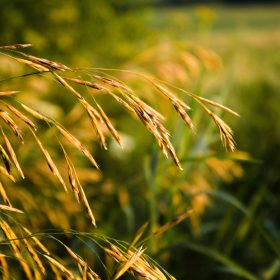Download this information to use later:
Did you know that members can download this resource as a PDF?
5min read
Running a farm or ranch operation often requires the reliable use of buildings, equipment, vehicles, and supplies that enable day-to-day operations. Should you be protected in the case of damage or loss to these items?

Want specialty content that goes beyond the basics?
Running a farm or ranch business involves a lot of stuff — literally. There are tools and tractors, barns and sheds, walk-in coolers, feed, and seeds, as well as other equipment, supplies, and vehicles that are used in the day-to-day operations of the business. This stuff is valuable to the business, and in legal terms, these items are called “farm personal property.” The law likes to call this stuff farm personal property to distinguish it from “real property,” which is real estate, another valuable farm asset that is not the subject of this guide.
So, how do you protect your ability to have and use these valuable items? Farm property insurance may be your answer. Keep reading to find out!
Farm property insurance pays out money to replace or rebuild the buildings, machinery, equipment, supplies, and vehicles your farm or ranch relies on should something bad happen to them.
To help you answer this question, consider the worst-case scenarios below to assess whether farm property insurance is a priority for you right now:

As the scenarios above highlight, farms and ranches have valuable property that are at risk of being damaged due to mistakes, bad weather, and just plain bad luck. Farm property insurance can increase your resilience, providing you with more ability to bounce back from your worst-case scenario. While it’s not fun to imagine the worst, this is an essential risk management step for identifying whether you have items you want to cover with farm property insurance.
Farm property insurance provides you with money to replace or rebuild insured property. Within that simple premise, there are three key elements to keep in mind. A basic farm property insurance policy will address: (1) the listed property that is protected from (2) covered perils (the legal term for terrible things that could happen) at (3) the property’s insured value.
Different farm and ranch operations have different assets, so items that are listed for coverage vary business to business.
Farm property coverage is generally available for:
Listing items for coverage entails inventorying all your farm personal property– the farm structures, equipment and machinery, and supplies that you want to insure. Those items can be insured through either scheduled coverage or blanket coverage.
Scheduled coverage is generally the cheaper and more straightforward way of insuring your farm personal property. Property items get listed using a scheduled inventory form where you work with an insurance agent to list the items you want to insure and then assign an individual replacement value, which is what you will be paid (minus deductible) if it is damaged or lost. With scheduled coverage you select the exact items you want to cover and for how much. If an item is not scheduled, it’s not covered unless you also secure a blanket policy.
Blanket coverage is more flexible, insuring your farm personal property inventory as one unit under a single dollar amount. This means items do not have to be listed individually to be covered, but your insurance agent will come out to your farm to assess your items to ensure that the inventory you do have is valued appropriately. Through this process you will land on an appropriate dollar amount of blanket coverage (e.g. if your property items are valued at $50,000, you don’t need $100,000 of blanket coverage but you do need $50,000!). This dollar amount is the limit for what the insurance company will pay out on a claim (minus deductible).
The benefits of blanket coverage are twofold. First, blanket coverage includes wiggle room for new items to be covered even if they weren’t accounted for in the original inventory. Second, blanket coverage allows for flexible assignment of coverage across property items in case actual replacement costs for an item are higher as long as the claim falls within the blanket limit amount.
Let’s take an example: Farmer Mika has $50,000 blanket coverage. Unfortunately, she loses her $25,000 tractor in a bad storm and she finds it will actually cost $30,000 to replace it due to inflation. Even though the replacement cost is higher, it may still be covered as the cost falls within the blanket limit.
The downside to blanket coverage is that it can be more expensive than scheduled coverage. Depending on a farmer’s goals, the additional expense may be worth the flexibility. Keep in mind that both scheduled and blanket coverage can be combined in one policy to maximize cost savings and coverage.
Typically, farm structures, equipment and tools, and supplies are covered from perils considered outside a person’s control- the proverbial “acts of God” like tornadoes, hurricanes, and theft. But insurers often exclude specific perils, so perils vary from insurer to insurer. Nothing substitutes for specifically discussing this with your agent.
Let’s take an example: Farmer Ben has the bad luck of his hoophouse being severely damaged by snow and wind in a storm. However, he has property insurance for his hoophouse! When he goes to make a claim, it gets denied. Why? His hoophouse was listed. Snow was a covered peril. But snow where wind was also present was not a covered peril. Thus, Ben received no money in return.
The devil is always in the details! Legally, all that matters is the words in the policy. To ensure your policy includes the coverage you expect for the premiums you pay, work with an insurance agent you can trust who effectively communicates with you about your questions, needs, and budget.
Remember: All that matters is the words in the insurance policy! Your insurance policy is your contract for coverage, aka the terms under which you will receive payment.
Like with other policies, getting farm property insurance involves working with an agent to get coverage. A good, working relationship with an insurance agent who is willing to discuss the particular property items and associated risks of your business and answer your questions will go far in improving your resilience. A robust discussion is your best chance at getting a policy appropriate to your needs. However, what’s unique about farm property insurance is that your agent will generally come out to your farm or ranch to assess the actual property being covered. At the same time, your agent will ask about the property you want covered, including the value of those items. Remember, you decide what you want covered and for how much. You have a lot of power here to ask for what you need! The insurance agent will then offer you a policy they feel best meets your needs.
Did you know that members can download this resource as a PDF?

